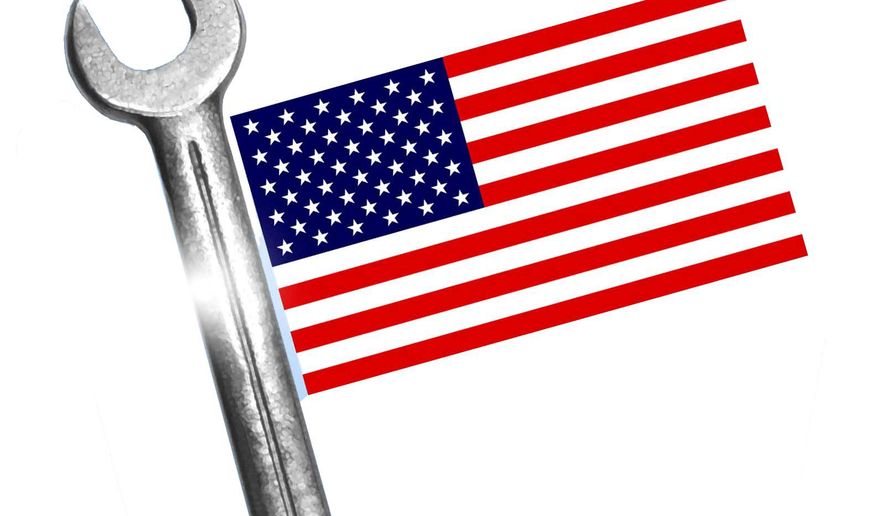OPINION:
Labor Day is dedicated to honor the “social and economic achievements of American workers” — according to the Department of Labor, anyway. For everyone else, it’s an opportunity to celebrate the end of summer.
However, American workers have made major achievements that shouldn’t be forgotten despite the focus on backyard barbecues. Most of these came around 100 years ago and involved making the workplace safer. Notwithstanding their gains, union members today have little new to celebrate this time around.
In reality, this Labor Day, many employees are stuck in union workplaces that have stifled the progress of the American worker rather than advanced it.
Consider: The Heritage Foundation recently found that labor unions represent eight million employees, only 478,000 of whom — six percent — ever voted for the union currently “representing” their interests. That’s right: 94 percent of union members who pay dues never voted in favor of their union representation. (This is consistent with an earlier analysis from the Center for Union Facts.)
Under current labor law, most unions have been grandfathered into the workplace — passed down from past generations, while current employees sit idly by and answer to union bosses whom they had no hand in electing. Worse yet, employees are guaranteed neither secret ballot union elections nor the opportunity to periodically re-assess their union representation. Leaving a union remains extremely difficult, as labor organizers have created a high art of intimidation to pressure employees and squashing dissent. Unions today are a multi-billion dollar business that are led by people who want to keep their jobs and expense accounts while they play big dog in political sandboxes.
Don’t just take it from me; ask employees themselves. According to a recent Rasmussen poll of likely U.S. voters, only 20 percent of Americans believe that labor leaders “do a good job representing union members.” Almost 60 percent of voters also claim that most union bosses are “out of touch” with most of their members.
Current and former union employees are not much more optimistic. Only 25 percent report that union bosses do a “good job” representing their membership. Well over 50 percent of these voters argue that union bosses are “out of touch,” while about half of them agree that labor unions generally “have too much political influence.”
This should come as no surprise. From 2012 to 2014, labor organizers sent nearly $420 million to the Democratic Party and closely aligned liberal special interest groups. Almost $150 million ended up with left-leaning think tanks including the Economic Policy Institute and National Employment Law Project, which lobby for a $15 minimum wage among other job-killing proposals. The Democratic Governors Association received about $7.8 million, while Catalist — a leading Democratic data firm — made off with more than $5 million in a span of three years.
Over the years, unions have regressed from worker advocacy organizations into the personal ATM of the Democratic Party, using member dues — still mandatory in many states — for left-wing politicking. From 2012 to 2014, roughly 99 percent of union political contributions supported Democratic candidates and liberal causes — even though about 40 percent of union household members vote Republican.
How can employees regain their voice on the job? They point to the Employee Rights Act (ERA), labor legislation which would substantially update American labor law for the first time since the 1940s. Introduced by Sen. Orrin Hatch, Utah Republican, and Rep. Tom Price, Georgia Republican, the ERA’s key provisions are supported by 80 percent of Democrats including those in union households — while the bill has amassed more than 165 co-sponsors on Capitol Hill. Interestingly no Democrat has signed on with Nancy Pelosi and Harry Reid looking over their shoulder.
The ERA contains eight pro-employee reforms, all of which are designed to hold union officials more accountable to their membership. The bill would guarantee secret ballot union elections, guarantee union members the opportunity to re-assess their union representation once a workplace experiences substantial turnover, and require labor organizers to secure opt-in approval before spending member dues on politicking. This enables employees to affirmatively support or oppose funding a union’s political agenda — democratizing workplaces that have become left-wing piggy banks over time.
Fearing the potential shakeup of the status quo, union sympathizers have openly attacked the legislation, calling it a “right-wing agenda” and an “anti-union scheme disguised as worker empowerment.”
But what is anti-union about secret ballot elections? Or putting union bosses up for reelection? Or allowing employees to say yes or no to a union’s political agenda funded with their money?
By ushering in workplace democracy while upholding the right to unionize, the Employee Rights Act leaves even Big Labor’s biggest allies scratching their heads searching for a legitimate reason to object.
Maybe next Labor Day, employees will have something more to celebrate.
• Richard Berman is the president of Berman and Company, a public affairs firm in Washington, D.C.




Please read our comment policy before commenting.